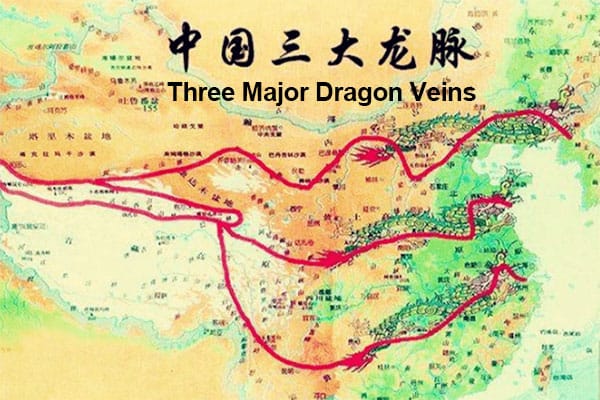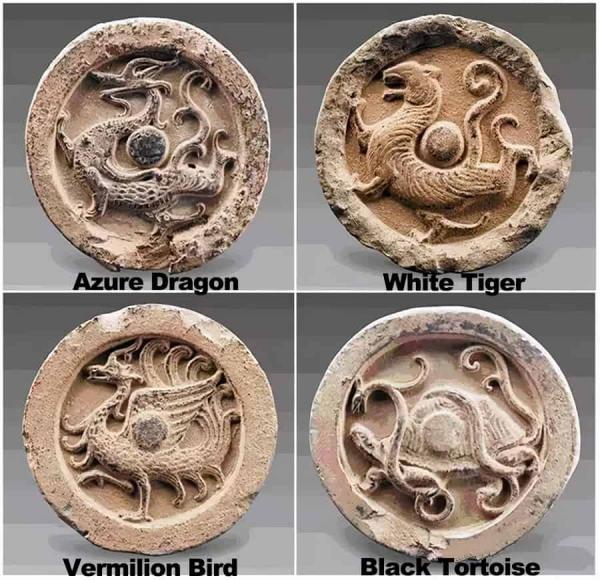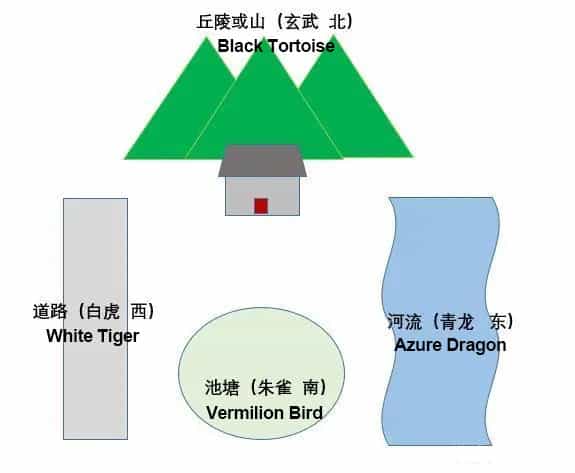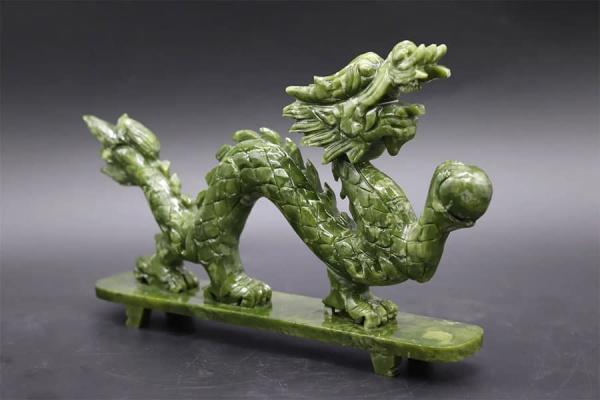Chinese Dragon in Feng Shui
The Loong (pronounciation of Chinese Dragons) is a major idea with a strong cultural foundation in Chinese culture. Chinese arts, architecture, festivals, costumes, the Chinese zodiac, and Feng Shui all make extensive use of its images. In contrast to the more ferocious western version, the dragon in Chinese culture is beloved, where it’s viewed as a brave and prosperous energy.
This article helps you better understand some key meanings of Chinese dragon in Feng Shui, and shows you how to employ a dragon statue to improve the Feng Shui of your space.
Dragon Vein (龙脉)
The Dragon Vein is a very important term in Chinese Feng Shui and geomancy. It refers to those winding and continuous mountains. Because of its undulating and ever-changing form, the mountain range is in many ways similar to the legendary dragon. Therefore, in Chinese Feng Shui, the mountain range is likened to a dragon.
This Chinese dragon in Feng Shui generally means geographical veins, in which rivers are the veins of the dragon itself, water is the blood of the dragon, earth is the flesh of the dragon, stones are the bones of the dragon, and grasses and trees are the hairs of the dragon.
In Chinese Feng Shui, the Kunlun Mountains are considered “Ancestor of All Mountains, Souce of All Dragon Veins”. China has three major dragons (mountain ranges) that branch out from the Kunlun Mountain Range in the northwest and toward the southeast.

The North Dragon enters Shanxi Province from Yins Mountain and Helan Mountains and ends at the sea; the Middle Dragon extends across Guanzhong region of Shaanxi Province from Min Mountains and enters the sea from Qin Mountains; The South Dragon stretches across Yunnan and Guizhou to Fujian and Zhejiang, and finishes at the sea.
In ancient China, the dragon veins were once thought to be a typical treasure place with auspicious geomantic omens, which is why Chinese emperors throughout history made every effort to find where the dragon veins were. Rulers would choose to establish a national capital or their own mausoleums close to the dragon veins. They believed it could ensure the consolidation of the dynasty and its longevity. Beijing, the capital city in the Liao, Jin, Yuan, Ming and Qing dynasties, is located on the North Dragon.
Blue Dragon (青龙)
Ancient Chinese astronomy divided the zodiacal constellations of the sky into four star groups according to east, west, south, and north directions. Each group contains seven astrological mansions (positions of the Moon), making a total of 28 mansions. The Twenty-Eight Mansions (or known as 28 xiu in Chinese) were of great importance in Chinese astrology and astronomy.
Each xiu group was given the name of a mythical creature, namely the Azure Dragon (青龙) of the east, the White Tiger (白虎) of the west, the Vermilion Bird (朱雀) of the south, and the Black Tortoise (玄武) of the north. They are named Four Symbols, Four Gods, Four Guardians, or Four Auspicious Beasts.

The Azure Dragon (Qinglong in Chinese) is also known as Green Dragon, the Blue Dragon, or the Blue-green Dragon. The seven lunar mansions with the Azure Dragon are Horn (角 Jiăo), Neck (亢 Kàng), Root (氐 Dĭ), Room (房 Fáng), Heart (心 Xīn), Tail (尾 Wěi), and Winnowing Basket (箕 Jī).
The Four Symbols were later introduced into mythology, Feng Shui, and became part of traditional Chinese culture. So, the Azure Dragon in the Chinese constellations is also associated with east in terms of direction, spring season, and wood of the Wuxing element. In Taoism, the Four Symbols were personified and have been given names and human identities. The Azure Dragon is named Meng Zhang (孟章). It also represents the Five Regions' Highest Deities (五方上帝, wufang shangdi).
The Azure Dragon in Feng Shui is also significant. When selecting a residence or tomb, the Four Symbols should be considered. One of the architectural rules of traditional Chinese Feng Shui theory is to sit nort and face south. According to this orientation, the left side of the house is east, the right side west, the front south, and the back north. This is why Chinese people always say “Left Azure Dragon, Right White Tiger, Front Vermilion Bird, Back Black Tortoise”.
Feng-Shui states that the ideal location for a home is where there is running water on the left (east), a road on the right (west), a pond in front (south), and a hill behind (north).

Feng Shui Dragon Statue
In China, the dragon symbolizes good luck, strength, bravery, ambition, prosperity and so on. The dragon symbol is widely used on both great and small scales in Feng Shui practice. Feng Shui practitioners believe that placing a Feng Shui dragon statue can boost positive yang energy into your living space, increase wealth in your workplace, and protect you and your family from negative energies.
We’ll provide some tips from Feng Shui experts to help you decorate your place with the good luck feng shui dragon to attract more fortune.

Dragon Feng Shui Placement
The ideal direction to put the dragon in Feng Shui placement is the east sector, because the dragon is connected to east in Chinese astrology. In this way, the dragon will activate wealth and health, and pushes negative energies and evil spirits away.
What to Avoid with Feng Shui Dragon Placement
1. Don’t position the Feng Shui dragon directly facing a wall, door or window. Instead, it should face into the room.
2. Don’t place the Feng Shui dragon in low-energy environments, including bathrooms, garages, closets, etc.
3. Don’t select dragon symbols that are too big and not in proportion to your space.
4. Don’t buy rugs with dragons printed on them. It’s bad luck to step on any dragons.
Dragon God (龙神)
The Dragon God is a god who protects the earth’s veins, and is also a deity valued by feng shui practitioners. Such belief is widespread throughout southern China, especially in Guangdong and Fujian provinces.
The Dragon God is said to be the Azure Dragon of the Four Symbols mentioned above. And it’s also said to be a Mountain God living in the mountain. In the Yilan area of Taiwan, a Dragon God tablet will be erected next to the grave for Feng Shui purpose, commonly known as the “Mountain Spirit”. In Guangdong and Guangxi, local people enshrine the Dragon God at home to have peace at home.
In the old traditional Chinese wedding ceremony, it was also often necessary to worship the Dragon God when worshiping the family gods.